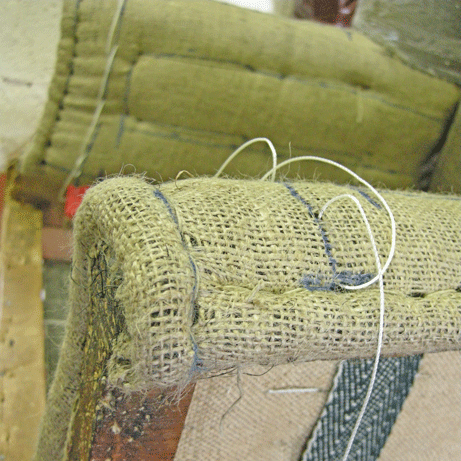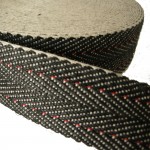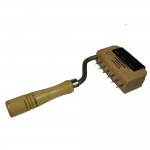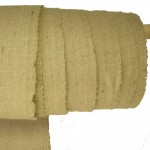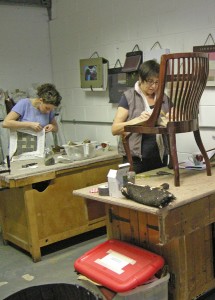What Does Traditional Upholstery Involve ?
Traditional upholstery is an age-old craft where an item of antique furniture is upholstered using hand tools, traditional methods and materials.
Generally speaking, there are seven layers involved in the traditional upholstery process. These layers are added in a specific order, as detailed below;
- The Webbing – Webbing is added to the seat to give strength to the upholstery and forms the base layer. Black & White Herringbone webbing should always be used on a seat as this is the strongest of all webbings available.
- Tarpaulin Hessian – Hessian is added on top of the webbing and provides another layer of strength enabling someone to sit on the furniture. If double cone springs are to be added then they would be tied into the hessian and another layer of hessian added prior to the stage 3.
- Loose Hair – Loose hair is tied into the hessian with the use of stuffing ties and this provides the first layer of padding on the seat. Depending on the type of seat, the first layer of hair may be stitched around the edge to form a stitched edge roll and then another layer of hair added. This is common on larger chairs and settees.
- Cotton Felt – Cotton felt is placed on top of the hair to prevent hair poking through the seat into the person sitting on the chair. It also adds another layer of padding.
- Calico – Calico is added on top of the cotton felt and is then stretched tightly over all the layers and fastened securely with tacks.
- Dacron – Dacron is the final layer which sits between the calico and the top/show fabric. It prevents the calico and top fabric rubbing together and therefore gives a longer life span to the top fabric.
- Top Fabric – Top fabric is the final layer of upholstery fabric. Upholstery fabrics come is a huge range of textures and styles.
Benefits of Traditional Upholstery Over Modern Upholstery
Traditional upholstery, if executed properly, should last at least a generation, whereas modern upholstery contains foam, and foam has a lifespan of approximately 10 years, after which it begins to crumble.
Traditional upholstery can be fairly rigid compared to modern upholstered furniture and is therefore, in general, much better for your posture and back.
If you have a valuable antique, re-upholstering using modern methods will decrease the value of your item.
In our opinion, antique furniture should never be re-upholstered using modern upholstery techniques and vice versa.
How to Identify Chairs which have been Traditionally Upholstered
Chairs which have been traditionally upholstered tend to be very heavy and you may also be able to feel the “crunch” of loose hair when you feel the seat.
The profile of a chair which has been traditionally upholstered will also be different to a chair re-upholstered with foam and staples although this is usually something you can determine with experience.
Traditional Upholstery – Our Services
Based in Sheffield, we provide a traditional upholstery service to the whole of the UK. If you have a piece of antique furniture that you would like to recover or re-upholster then please contact us for more details. Alternatively, if you are interested in traditional upholstery as a hobby or career then why not attend one of our two or five day courses here in Sheffield. Please see the Upholstery Courses section, on the website, for more information.



